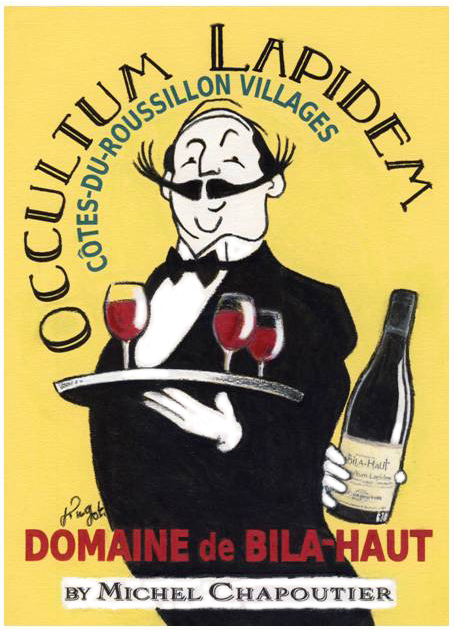by Hobart Swan
Published: September 26,2013
8:47 am Thu, September 26, 2013
Paul Beckman looks for truffles on his Eagle property, Bella Vista Farms, with his three dogs. Beckman has planted 12 acres with hundreds of oak, hazelnut, pecan and walnut trees, all inoculated with the fungi that grow truffles. Photo by Patrick Sweeney.
Idaho farmers are experimenting with a new tuber, one that sells for a thousand times more than potatoes per pound.
This tuber is the truffle, the fruiting body – between the size of a golf ball and a baseball – of fungi that grow underground on tree roots.
Paul Beckman of Eagle, a retired Air Force lieutenant colonel, has planted 12 acres with hundreds of oak, hazelnut, pecan and walnut trees, all inoculated with the fungi that grow truffles. Beckman is one of a handful of Idaho farmers looking for a way to bring in about $800 a pound with truffles. One kind of truffle, the elusive Tuber magnatum, sells for $5,000 a pound.
When it’s dug up from the ground, a truffle can resemble a potato. But when the two crops hit the market, all comparisons disappear. Potato farmers typically get less than 50 cents a pound for the sweat of their brows.
Beckman, who started growing truffles in 2006, also does computer and accounting work at Camille Beckman, the Eagle-based cream and lotion manufacturer owned by his sister. He holds a degree in agricultural economics from the University of Idaho.
Beckman said he’s drawn to truffle growing by the complexity of the business and by its potential rewards.
Truffles need soil that drains well and has the right pH (7.9 is ideal). But that’s just the beginning.
“Growing truffles is unlike growing any other crop,” Beckman says. “It’s not like you plant a seed in the ground in the spring and harvest the crop in the fall. Nobody knows for sure what causes the truffle to fruit on tree roots. Truffle lore has it that lightning triggers growth. It’s more likely that it’s caused by the rain that comes with the lightning.”
Other unknowns: the ideal mix of water, sun and shade; the enzymes in horse manure that the French believe increase production; the ideal number of trees per acre; and the optimal spacing of the trees. Some growers believe stressing the trees makes them more dependent upon the fungi and increases truffle production; others believe the opposite.
Beckman characterized his involvement as an educated but expensive gamble. His first harvest was in February 2012, and he found about five truffles. In the spring of 2013, he found 50. He’s still hunting for truffles this fall and hopes to get enough this year to sell to the chef he’s been talking to at an Italian restaurant in Meridian.
“They buy Oregon truffles now, when they’re in season,” Beckman said.
Upfront cost versus sustainable revenue
Beckman estimated there are about 15 truffle growers in Idaho, four of them clustered together near his place in Eagle. He planted 150 to 200 inoculated trees on each of his 12 acres. Including drip irrigation, the truffle farm set him back between $4,000 and $5,000 an acre. He also figures in the cost of caring for and feeding dogs specially trained to sniff out the truffles, including his two Australian shepherds and the Italian truffle dog, a lagotto Romagnolo, he purchased about three months ago from friends in Tennessee. The Italian truffle dogs usually cost about $3,000, he said.
“But here’s the deal,” he said, noting that his Australian shepherd found 47 of the truffles he harvested last year. “Any mutt will work. Any dog with a nose will find truffles.”
Beckman has already received honors in the truffle world. Truffle grower Charles LeFevre, a mycologist from Oregon State University who served as president of the North American Truffling Society for more than 10 years, has gone on record saying Beckman grew the first Italian spring white truffle or Tuscany white truffle in North America. Beckman buys his inoculated trees from LeFevre’s New World Truffieres in Eugene, Ore.
Yields vary from year to year, said LeFevre, making the truffle-growing enterprise something of a gamble.
“Some farms produce more than 150 pounds per acre each year,” he said. “But probably a more typical yield is 35 pounds per acre.”
Beckman thinks he can average $700 to $800 per pound for the five varieties of truffles he grows. His trees are inoculated with bianchetto, summer, burgundy, Perigord or Tuber magnatum fungi. Beckman would like to be the first in the world to successfully cultivate Tuber magnatum, the truffle that fetches $5,000 per pound. He has four trees inoculated with that fungus.
“But no one,” Beckman said, “not even in Europe where they’ve been harvesting them for hundreds of years, knows how to grow the magnatum.”
Using conservative figures, $700 per pound multiplied by 25 pounds multiplied by 12 acres would give Beckman annual sales of $174,000 – with only occasional tilling to knock down weeds, a water bill that stays less than $150 per month in the summer and, of course, a lot of dog biscuits.
Jennifer Ellsworth is general manager of Unisun Software, a Boise company that provides inventory management and accounting software for fresh produce growers, packers and shippers across the U.S. She said Idaho farmers get an average yield of 40,000 pounds of potatoes per acre, “and would love to get 25 cents a pound.”
Even before significant costs associated with growing potatoes, a gross figure of $10,000 per acre is still a small fraction of what a truffle grower can hope to bring in.
The few, the proud
LeFevre sells thousands of inoculated trees every year, and has insight into the kind of person who is best suited to truffle farming.
“If you’re thinking about investing your retirement funds this way, that’s a really bad idea,” he said. “But if your retirement is secure and you want to invest in something that could be very good for you five to 12 years from now, then farming truffles makes a lot of sense.”
He says that most growers are, like Beckman, “early adopters.” These are the people willing to be among the first to try something, who take on the risk in an undeveloped market to position themselves for big gains later on.
“It takes a lot of things to grow truffles,” Beckman says, “You need the upfront capital. You need good land. You need the right mix of a hundred different variables. But the one thing you really need is a little luck and a lot of patience.”
About truffles
A truffle has little to do with a potato, and nothing to do with those small, round chocolate confections also known as truffles. The only thing all three have in common is that they have the word “tuber” (Latin for “lump”) attached to them. (“Tuber” became “tufer,” which later became “truffle.”)
Otherwise, potatoes and truffles are worlds apart. The potato is scientifically classified as a member of the kingdom “Plantae” along with 250,000 other species of mosses, ferns, conifers and flowering plants.
Truffles are in a completely different kingdom, “Fungi.” This kingdom encompasses an estimated 1.5 million to 5 million species of organisms including mushrooms, yeasts and molds. A dish of potatoes cooked with truffle-infused butter brings these two worlds together deliciously.
Eric Forsch | Business Attraction Specialist
Idaho Commerce
700 W State Street, Boise, Idaho 83702
Office: 208.287.0779
Cell: 208.901.1311
eric.forsch@commerce.idaho.gov
Maralyn D. Hill, M.Ed., The Epicurean Explorer
Executive Editor, LuxeBeatMag.com
Freelance Lifestyle Journalist
International Food Wine & Travel Writers Association (IFWTWA)
Board Member, Co-Chair Conference & Media Trip Committee, Past President
Member: Society of American Travel Writers (SATW)
Member: Society of Professional Journalists (SPJ)
Blogs: Where and What in the World & Success with Writing
https://authorcentral.amazon.
Follow me: @maralynhill
FB: http://www.facebook.com/The.Epicurean.Explorer,, http://www.facebook.com/WhereandWhat.intheWorld, http://www.facebook.com/Success.With.Writing
Linkedin: http://www.linkedin.com/in/maralynhill
We welcome press releases on the food, wine, travel, and items related to the hospitality industry. We receive emails with more than we can post to our service. If you would like to post a press release, please click the the submission tab to get the form to upload your release. You can also upload three photos. It will go in pending and be scheduled, unless it is unappropriate. This will enable more of you to have your releases up in a timely manner.






